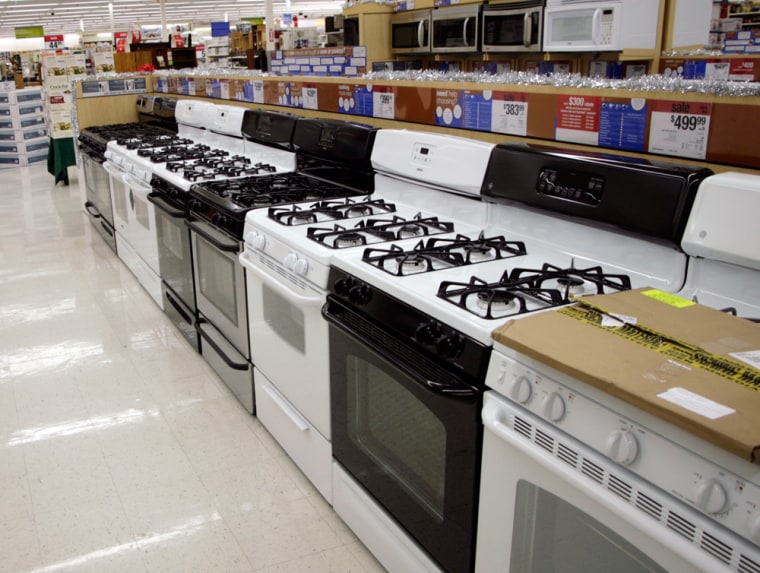Three pillars of the economy — consumer confidence, orders for manufactured goods and home prices — showed surprising cracks on Tuesday, flashing signals that growth may slow more heading into the important holiday shopping season.
The New York-based Conference Board said its widely watched consumer confidence index fell to 102.9 in November from a revised reading of 105.1 in October. November’s figure was the lowest since August’s 100.2 and well below economists’ expectations of a 106 reading.
That news arrived on the heels of a government report on durable goods that showed orders for big-ticket manufactured goods plunged 8.3 percent in October — the largest drop in more than six years.
And the median price of a home dropped to $221,000 in October, a decline of 3.5 percent from a year ago, according to the National Association of Realtors. It was the biggest year-over-year price decline on record for an asset that many Americans use as a gauge of their financial well-being.
The reports drew some air out of any inflated hopes for a robust holiday shopping season. Economists still believe it will be a decent season, however, because of lower gasoline prices, which have put more money in consumers’ pockets. Prices at the pump have dropped 80 cents a gallon, on average, since the start of August.
Consumers “are not feeling really good now,” said Gary Thayer, chief economist at A.G. Edwards & Sons Inc., though he added they’re feeling better compared to this past summer when gasoline prices surged.
“We are still positive on the consumer sector. I think it will be a good holiday season,” he noted.

Some of the weaker-than-expected economic news, namely the durable goods and consumer confidence reports, boosted Treasury prices and knocked down yields. The 10-year Treasury yield fell below 4.50 percent for the first time since late January on expectations that a slowing economy may force the Federal Reserve, which has left interest rates intact since August, to begin lowering interest rates next year.
Federal Reserve Chairman Ben Bernanke said Tuesday that risks from inflation or a worse-than-expected housing slump could further complicate matters for the economy. In his first speech in months, he made it clear that he would monitor the situation, particularly labor costs.
In prepared remarks to the National Italian American Foundation in New York, the Fed chairman said “substantial uncertainties” surround the Fed’s outlook.
He noted that the slowdown in the housing market could turn out to be deeper than expected, dragging down overall economic activity even more. In contrast, economic growth could rebound more strongly than expected, which could lead to rising inflation.
In afternoon trading, the Dow rose 9.93, or 0.08 percent, to 12,131.64, after falling 158 on Monday.
Merchants are counting on confident shoppers to keep spending through the holiday season, but worries about job security could make them scour for bargains at the malls and department stores.
High-profile layoffs in the auto industry and steep cutbacks in home building have made consumers uneasy about the labor market, even though government reports have painted a healthy picture for jobs. The drop in durable orders also provided more evidence that the nation’s factories are beginning to feel the impact of the slowdown in the overall economy and could derail any gains made in the employment market.

“A tighter labor market and a more guarded short-term outlook have combined to curb consumers’ confidence in November,” said Lynn Franco, director of The Conference Board Consumer Research Center, in a statement. But she added that despite the retreat, “the overall level of confidence remains favorable and continues to suggest that the economy will expand throughout the first half of next year.”
The group’s Present Situation Index, which measures how shoppers feel now about economic conditions, declined to 123.6 from 125.1. Its Expectations Index, which measures consumers’ outlook over the next six months, declined to 89.2 from 91.9 in November.
The consumer confidence report — derived from responses through Nov. 14 to a survey mailed to 5,000 households in a consumer research panel — showed that labor market conditions were less favorable than in October. Those saying jobs are “hard to get” rose to 22.4 percent from 21.8 percent. Those claiming jobs are “plentiful” increased slightly to 25.8 percent from 25.6 percent in October.
Consumers’ short-term outlook was less optimistic in November than in October. Those expecting business conditions to improve in the next six months decreased to 15.1 percent from 18.5. Those anticipating business conditions to worsen, however, decreased to 8.5 percent from 10.0 percent.
The outlook for the labor market remained mixed. Consumers expecting more jobs to become available in the coming months decreased to 13.1 percent from 15.1 percent, while those anticipating fewer jobs also decreased to 16.7 percent from 18.0 percent.
